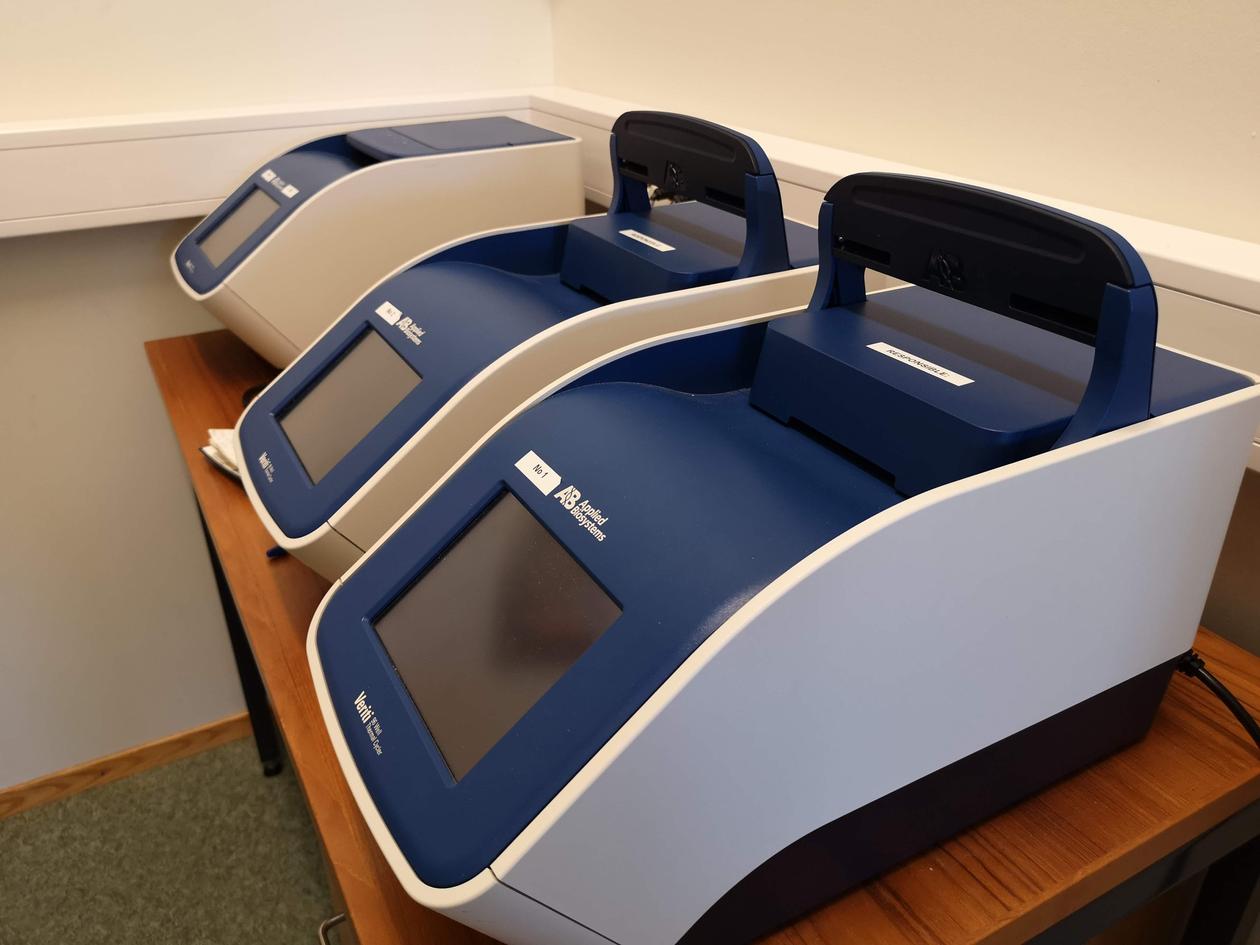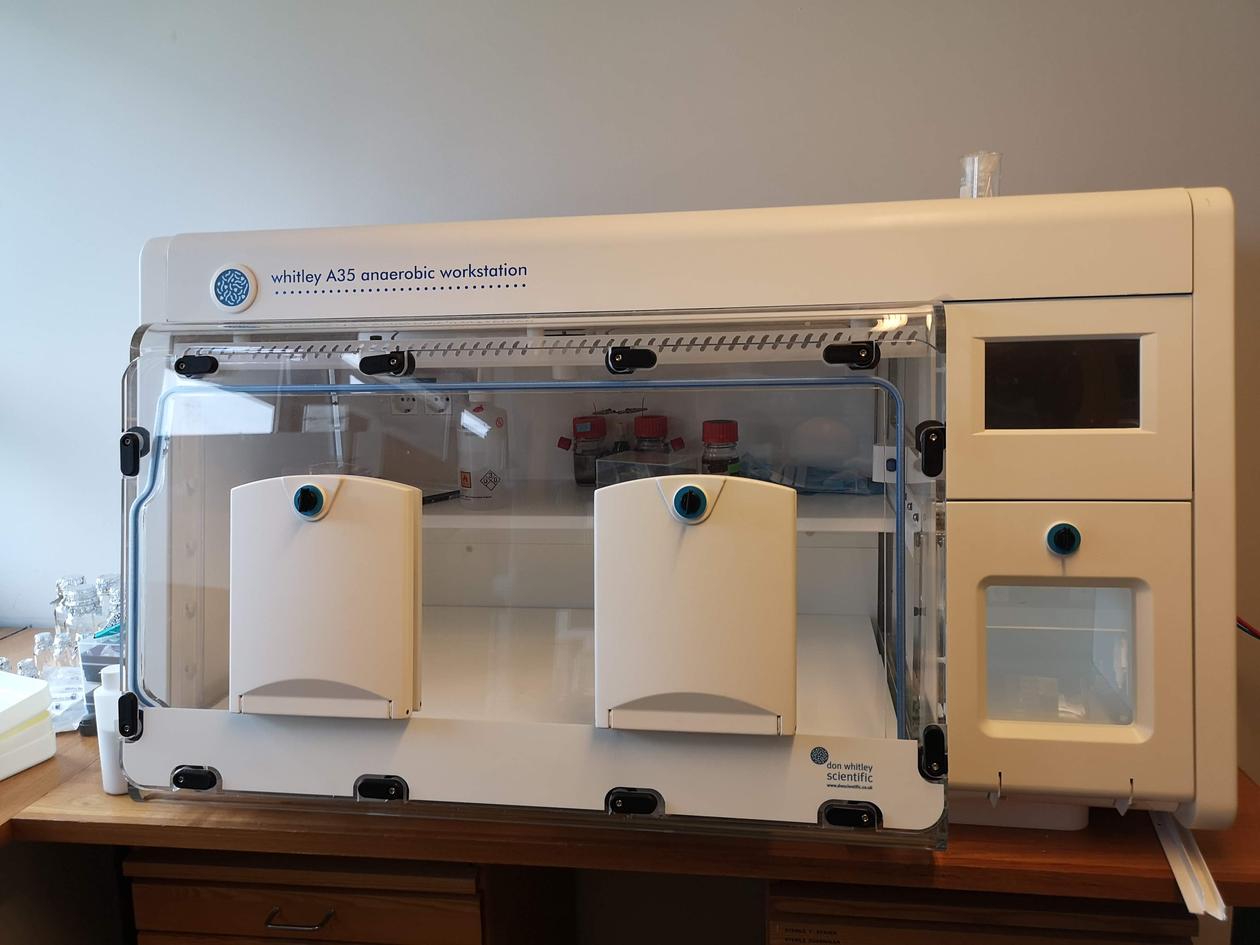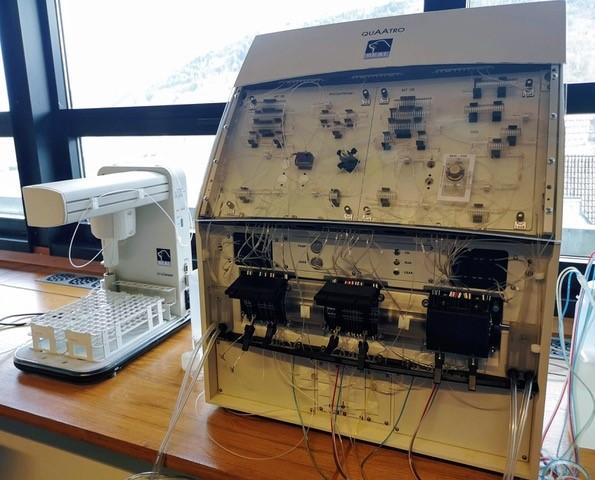Geomikrobiology lab
The geomicrobiology lab is primarily used to analyze samples gathered from by scientists of the Center for Deep Sea Research. We carry out extraction, amplification and sequencing of DNA, identification and cultivation of microorganisms and quantification and characterization of diverse microbial groups in geological and biological samples. Furthermore, we have equipment for geochemical experiments.
Main content
In recent decades, the gap between microbiology and other fields such as geology, geochemistry, paleoclimate, and others has drastically been narrowed. Indeed, the ~10^30microbes inhabiting our planet have been found in virtually any environment, and they have been shown to strongly influence their environment. As such, many systemic studies related to earth sciences would benefit from investigating the microbial component. Members of the laboratory have a long experience in a wide range of methods (see below) and we would happily help anyone interested in using our laboratory.
Microorganisms cultivation
Cultivation of microorganisms is a classical microbiological approach. In order to better understand deep-sea microorganisms and microbial communities, being able to isolate pure cultures to describe their features and observe their growth can be very useful. To allow for this, the geomicrobiology lab hosts equipment required in the cultivation of diverse microorganisms. Laminar flow benches and fume hoods allow for clean preparation of required growth media, and we have several static and shaking incubators from Binder, Termaks and Gerhardt that facilitate the incubation of chosen microorganisms at a wide temperature range. We also have a Whitley A35 anaerobic workbench for working with organisms that do not tolerate the presence of oxygen.
Extraction of genetic material
Extracting genetic material is crucial for addressing research questions involving geomicrobiology. We rely on extracted DNA to quantify and characterize the life forms present in samples originating from a wide range of terrestrial and marine environments. To isolate DNA, we use thoroughly tested extraction kits and protocols customized to each task. Extraction is routinely followed by quantification and visualization of DNA for quality control before further analyses.
DNA amplification and quantification
Genetic material isolated from environmental samples is often limited in quantity and can be poor in quality. In order to produce more DNA for analyse, the geomicrobiology lab isequipped with Applied Biosystems Venti thermal cyclers, which allow us to carry out Polymerase chain reactions (PCR). This cornerstone molecular biology method allows for the rapid amplification of specific stretches of DNA, specified by short “starter” DNA fragments called primers. The amplification is then driven by a microbial enzyme called DNA Polymerase. Finally, the produced DNA can be used in downstream analyses such as sequencing or cloning.
A more specialized instrument is also in place for thereal-time monitoring of PCR amplification with the use of fluorescent dyes. The Applied Biosystems StepOnePlus quantitative PCR (qPCR) machine is used for the quantitative assessment of microbiological samples based on the different primers used for amplification. This allows for example to estimate the abundance of microbial populations in our samples, but we can also quantify a whole range of functional genes to assess the metabolic potential of a microbial community.
DNA sequencing
Members of the laboratory have direct access to an Ion Torrent PGM machine at the department of Biology, allowing to obtain sequencing results within days. We regularly use it for the deep sequencing of marker genes such as the 16S rRNA gene, which reveals the microbial composition of a given sample.
Fluorescence in situ Hybridization
The geomicrobiology lab is equipped with a Zeiss Fluorescence microscope. In addition to its high-quality image capturing capabilities, this microscope can also be used for the fluorescence in situ hybridization (FISH) method. With FISH, we can use fluorescent gene-tags to visually image and identify microorganisms with specific genetic properties and to discriminate between different groups of microorganisms in our samples.
Geochemical analyses
We have recently added a Seal Analytical QuAAtro39 AutoAnalyzer system to our laboratory. The system is mainly used to carry out nutrient analyses of porewater samples taken from various environments, informing researchers about the concentrations of a range of important molecules such as NO3–, NO2–, PO4, and NH4+.


